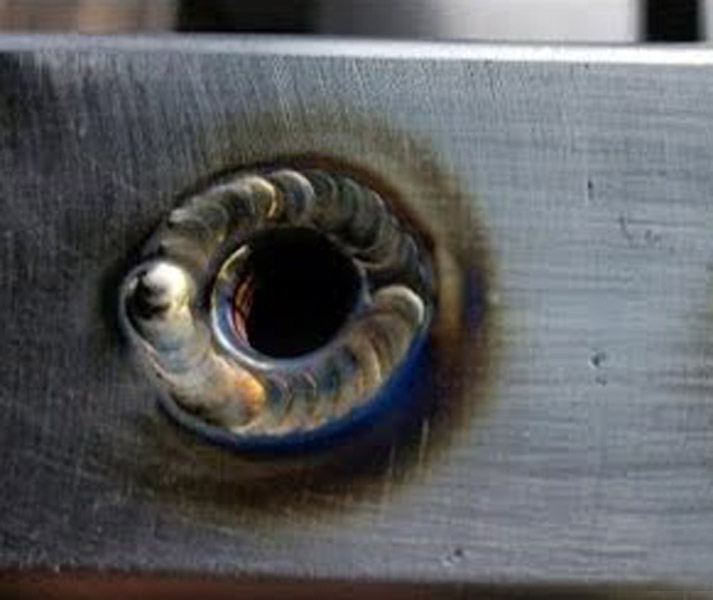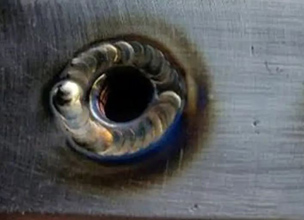Welding is a crucial aspect of metal fabrication, and TIG welding is one of the most popular welding techniques. It allows for precise and clean welds, making it an ideal choice for tig welding stainless to mild steel. Achieving seamless welds between these two types of metals is no easy feat. That’s where this ultimate guide comes in. In this guide, we will cover everything you need to know about TIG welding stainless to mild steel, including the materials and equipment needed, preparation techniques, welding techniques, and troubleshooting tips.

What is TIG welding and how does it work?
TIG welding, also known as Gas Tungsten Arc Welding, is a welding technique that uses a tungsten electrode to produce an electric arc. The tungsten electrode is non-consumable, meaning that it does not melt during the welding process. Instead, it creates a heat source that melts the base metals, which are then fused together to form a weld.
One of the advantages of TIG welding is its ability to produce high quality welds. The process is highly controllable, allowing the welder to adjust the heat input, arc length, and travel speed to achieve the desired results. TIG welding produces a low amount of spatter and smoke, making it a clean welding process.
Why TIG welding is the best choice for welding stainless to mild steel
TIG welding is the best choice for welding stainless steel to mild steel due to its ability to produce precise and clean welds. When welding stainless steel to mild steel, it’s important to maintain the corrosion resistance of the stainless steel while also ensuring a strong and durable bond between the two metals. TIG welding achieves both of these objectives by using a non-consumable tungsten electrode, which produces a precise and controlled heat source. The result is a clean and precise weld that maintains the corrosion resistance of the stainless steel.
Another advantage of TIG welding is its ability to weld thin materials. When welding stainless steel to mild steel, it’s important to use a welding technique that minimizes heat input to prevent warping or distortion of the materials. TIG welding achieves this by using a low amperage and precise heat input, making it an ideal choice for welding thin materials.
Materials and equipment needed for TIG welding stainless to mild steel
Before you begin TIG welding stainless to mild steel, you will need to gather the necessary materials and equipment. Here’s a list of what you will need:
Materials
- Stainless steel filler rod
- Mild steel filler rod
- Stainless steel sheet or plate
- Mild steel sheet or plate
Equipment
- TIG welder
- Tungsten electrode
- Gas regulator
- Argon gas
- Welding gloves
- Welding helmet
- Wire brush
- Grinder
When selecting filler rods, it’s important to choose a filler rod that matches the chemical composition of the base metals. This will ensure a strong and durable bond between the two metals. In addition, it’s important to use a high quality TIG welder that has precise controls and is capable of producing a stable and consistent arc.
Preparing the metal surfaces for welding
Before you begin welding, it’s important to prepare the metal surfaces to ensure a strong and durable bond between the two metals. Here’s how to prepare the metal surfaces for welding:
Clean the metal surfaces: Use a wire brush or grinder to remove any rust, dirt, or debris from the metal surfaces. This will ensure that the weld penetrates the metal and creates a strong bond.
Bevel the edges: Bevel the edges of the metal surfaces to create a V-shaped groove. This will allow the filler metal to penetrate deeper into the joint, creating a stronger bond.
Tack weld the metals together: Use a few tack welds to hold the metals together. This will prevent the metals from moving during welding and ensure that the joint is properly aligned.
Clean the joint: Clean the joint with a wire brush or grinder to remove any rust or debris. This will ensure that the weld penetrates the metal and creates a strong bond.
Techniques for welding stainless to mild steel
When tig welding stainless to mild steel, it’s important to use the proper welding techniques to achieve a strong and durable bond between the two metals. Here are some techniques to keep in mind:
Use the right filler rod: Select a filler rod that matches the chemical composition of the base metals. This will ensure a strong and durable bond between the two metals.
Adjust the heat input: Use a low amperage and precise heat input to prevent warping or distortion of the materials. This will also prevent the filler metal from burning through the base metal.
Maintain a consistent arc: Keep the tungsten electrode within 1/8 inch of the workpiece to maintain a consistent arc. This will ensure a clean and precise weld.
Use the right travel speed: Use a slow travel speed to allow the filler metal to penetrate the joint and create a strong bond.
How to weld stainless steel to mild steel
Now that you are familiar with the techniques for welding stainless steel to mild steel, let’s walk through the steps for actually welding the two metals together:
Set up the TIG welder: Set the TIG welder to the appropriate settings for the thickness of the metals you are welding. This will ensure a stable and consistent arc.
Insert the tungsten electrode: Insert the tungsten electrode into the TIG torch and tighten the collet.
Attach the gas regulator: Attach the gas regulator to the TIG welder and set the flow rate to the appropriate level.
Turn on the gas: Turn on the argon gas and adjust the flow rate to the appropriate level.
Strike the arc: Touch the tungsten electrode to the workpiece and lift it up slightly to create an arc.
Add filler metal: Dip the filler metal into the arc and use it to fill the joint.
Move the TIG torch: Move the TIG torch along the joint, maintaining a consistent arc and adding filler metal as needed.
Finish the weld: Once you have filled the joint, continue moving the TIG torch along the joint to create a smooth and even weld.
Tips for achieving seamless welds
Achieving seamless welds between stainless steel and mild steel requires careful attention to detail and precise welding techniques. Here are some tips to help you achieve seamless welds:
Keep the heat input low: Use a low amperage and precise heat input to prevent warping or distortion of the materials.
Use a slow travel speed: Use a slow travel speed to allow the filler metal to penetrate the joint and create a strong bond.
Maintain a consistent arc: Keep the tungsten electrode within 1/8 inch of the workpiece to maintain a consistent arc. This will ensure a clean and precise weld.
Keep the joint clean: Clean the joint with a wire brush or grinder to remove any rust or debris. This will ensure that the weld penetrates the metal and creates a strong bond.
Safety precautions when TIG welding
TIG welding produces a high amount of UV radiation and can be dangerous if proper safety precautions are not taken. Here are some safety precautions to keep in mind when TIG welding:
Wear protective clothing: Wear welding gloves, a welding helmet, and protective clothing to protect yourself from UV radiation and sparks.
Use proper ventilation: Ensure that the welding area is well-ventilated to prevent the buildup of harmful fumes and gases.
Use a welding screen: Use a welding screen to protect bystanders from UV radiation.
Use a ground clamp: Use a ground clamp to prevent electrical shock.
Common mistakes to avoid when TIG welding stainless to mild steel
TIG welding stainless to mild steel requires careful attention to detail and precise welding techniques. Here are some common mistakes to avoid:
Using the wrong filler rod: Use a filler rod that matches the chemical composition of the base metals to ensure a strong and durable bond between the two metals.
Using too much heat: Use a low amperage and precise heat input to prevent warping or distortion of the materials.
Welding too fast: Use a slow travel speed to allow the filler metal to penetrate the joint and create a strong bond.
Not cleaning the joint: Clean the joint with a wire brush or grinder to remove any rust or debris. This will ensure that the weld penetrates the metal and creates a strong bond.
Summary of key takeaways and final thoughts
TIG welding stainless to mild steel requires careful attention to detail and precise welding techniques. By using the right materials and equipment, preparing the metal surfaces properly, and following the right welding techniques, you can achieve seamless welds between these two types of metals.
Remember to always take safety precautions when TIG welding, and avoid common mistakes by using the right filler rod, heat input, travel speed, and joint preparation techniques. With these tips in mind, you can take your welding skills to the next level and achieve seamless welds between stainless steel and mild steel.
